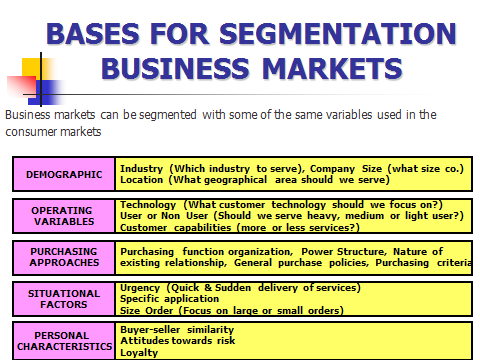Contents:


The deposits made to savings accounts, monthly rent payments, and retirement pensions are considered annuities. The payments received from an annuity are reported as income, and the amount of tax to be paid depends on the product. An annuity table calculates the present value of an annuity using a formula that applies a discount rate to future payments. Calculating the present value of an annuity can help you determine whether a lump sum payment or future annuity payments spread out over years will be more beneficial to your financial needs or goals. Remember that all annuity tables contain the same PVIFA factor for a given number of periods at a given rate, just like all times tables contain the same product for any two given numbers. Any variations you find among present value tables for ordinary annuities are due to rounding.
An annuity is a series of payments that occur over time at the same intervals and in the same amounts. An annuity due arises when each payment is due at the beginning of a period; it is an ordinary annuity when the payment is due at the end of a period. A common example of an annuity due is a rent payment that is scheduled to be paid at the beginning of a rental period. You learned how to use the “Sinking Fund Factor” in column 3 of the AH 505 tables and that it is typically used to determine how much must be set aside in each period in order to grow to a specified amount at the end. The above formula pertains to the formula for ordinary annuity where the payments are due and made at the end of each month or at the end of each period. What follows is an example of an annuity table for an ordinary annuity (meaning the payment is made at the end of the month.) Typically, the data in each annuity table is the same.
Present Value of Annuity Calculation Example (PV)
A lottery winner could use an annuity table to determine whether it makes more financial sense to take his lottery winnings as a lump-sum payment today or as a series of payments over many years. More commonly, annuities are a type of investment used to provide individuals with a steady income in retirement. The factor is determined by the interest rate and the number of periods in which payments will be made . In an annuity table, the number of periods is commonly depicted down the left column.
Individual Retirement Annuity – Investopedia
Individual Retirement Annuity.
Posted: Sun, 26 Mar 2017 06:36:52 GMT [source]
Since present value interest factor of annuity is a bit of a mouthful, it is often referred to as present value annuity factor or PVIFA for short. Unlike a perpetuity, an annuity also comes with a pre-determined maturity date, which marks the date when the final interest payment is received. The most common uses for the Present Value of Annuity Calculator include calculating the cash value of a court settlement, retirement funding needs, or loan payments.
Present Value Annuity Tables Formula: PV (1-1 / (1 + I) ) / I
Simply select the correct interest rate and number of periods to find your factor in the intersecting cell. That factor is then multiplied by the dollar amount of the annuity payment to arrive at the present value of the ordinary annuity. In Lesson 6, you learned that the “Present Worth of $1 per Period” function is used to discount a series of periodic payments to their present value. In Lesson 4, you learned that the “Future Worth of $1 per Period” function is used to compound a series of periodic equal payments to their future value. The objective of an annuity is to provide a recurring income to an individual post his or her retirement from services in order for the user to have a stable future when his income will get low. The insurance of the risk company measures the Present Value of an annuity which is due to capturing the risk and how long the payment will come in the coming years.
The Great Estate Planning Cake Bake Off: How to Make It, Give It … – Marcum LLP
The Great Estate Planning Cake Bake Off: How to Make It, Give It ….
Posted: Wed, 15 Feb 2023 08:00:00 GMT [source]
The present value interest factor of annuity is a factor used to calculate the present value of a series of annuity payments. In other words, it is a number that can be used to represent the present value of a series of payments. Except for minor differences due to rounding, answers to the exercises below will be the same whether they are computed using a financial calculator, computer software, PV tables, or formulas. As a rational person, the maximum that you would be willing to pay is the value today of these two cash flows discounted at 10%.
Using the PVOA Table
Our goal is to deliver the most understandable and comprehensive explanations of climate and finance topics. Carbon Collective is the first online investment advisor 100% focused on solving climate change. We believe that sustainable investing is not just an important climate solution, but a smart way to invest.
what is notes payable the number in that cell by the amount of money you get each period. The present value of an annuity is the current value of future payments from that annuity, given a specified rate of return or discount rate. A present value annuity table allows you to estimate the present value of an annuity quickly. Present value refers to the current value of future payments from an annuity with a specified rate of return. In Lesson 8, you learned that the “Mortgage Constant” function is used to determine the annualized payment amount per $1 of loan amount, for a fully amortized loan with monthly compounding and payments. You learned how to calculate this annualized payment amount using the “Mortgage Constant” factors found in column 7 of the AH 505 tables.

Now available in Excel format, students and instructors may view tables for the Future Value of a Lump Sum, Present Value of a Lump Sum, Future Value of an Annuity, and Present Value of an Annuity. First, we will calculate the present value of the annuity given the assumptions regarding the bond. When calculating the present value of an annuity, one factor to consider is the timing of the payment. Discover the scientific investment process Todd developed during his hedge fund days that he still uses to manage his own money today. It’s all simplified for you in this turn-key system that takes just 30 minutes per month.
You might want to calculate the present value of the annuity, to see how much it is worth today. The interest rate can be based on the current amount being obtained through other investments, the corporate cost of capital, or some other measure. The following table shows the value of this factor for various interest rates and time periods. This equation assumes that the first payment of the annuity is made at the end of the first time period.

John earned a bachelor’s degree in journalism from the University of Kansas and a master’s degree in communication from Southern New Hampshire University. We strive to empower readers with the most factual and reliable climate finance information possible to help them make informed decisions. Go a level deeper with us and investigate the potential impacts of climate change on investments like your retirement account.
Present Value Annuity Factor Table
By submitting the examination, you are attesting to the fact that you have read all the lessons and have performed all the exercises in the “Check Your Knowledge” section of the training. Or stream of installments in today’s dollars adjusted for interest and inflation is known as present value. In other words, it compares the acquiring control of a future dollar to that of a current dollar. Calculate the present value of an annuity due of 500 paid at the end of each month. A dollar invested today not only earns a return over a specific period of time, but that return earns a return as well. Advisory services provided by Carbon Collective Investment LLC (“Carbon Collective”), an SEC-registered investment adviser.
The term “present value” refers to an individual cash flow at one point in time, whereas the term “annuity” is used more generally to refer to a series of cash flows. The present value of an annuity is a calculation used to determine the current worth or cost of a fixed stream of future payments. In contrast, the annuity factor is used to calculate how much money must be invested at a given rate of return over a certain period for it to accumulate to a specific sum in the future. Present value is the discounted value of the future cash flows from an investment. Assessors’ Handbook Section 505, Capitalization Formulas and Tables, contains six compound interest functions and corresponding factor tables. Each compound interest function is defined by a formula, which is the basis for calculating the compound interest factors for that function.
This makes it very easy for you to multiply the factor by payment amount to work out the total present value of the annuity. Get instant access to video lessons taught by experienced investment bankers. Learn financial statement modeling, DCF, M&A, LBO, Comps and Excel shortcuts. The trade-off with fixed annuities is that an owner could miss out on any changes in market conditions that could have been favorable in terms of returns, but fixed annuities do offer more predictability.
- Because most fixed annuity contracts distribute payments at the end of the period, we’ve used ordinary annuity present value calculations for our examples.
- Put simply, it means that the resulting factor is the present value of a $1 annuity.
- Typically, insurers don’t share these calculations, which can include assumptions about a customer’s life expectancy.
- This simplifies the decision-making process for investors and generally makes it easier for you to calculate the present value without having to perform complex calculations.
As with the https://1investing.in/ value of an annuity, the receipts or payments are made in the future. Present value is the value today, where future value relates to accumulated future value. The present value of an annuity refers to the present value of a series of future promises to pay or receive an annuity at a specified interest rate. The present value interest factor of annuity is a factor that can be used to calculate the present value of a series of annuities.

According to the concept of the time value of money, receiving a lump sum payment in the present is worth more than receiving the same sum in the future. As such, having $10,000 today is better than being given $1,000 per year for the next 10 years because the sum could be invested and earn interest over that decade. At the end of the 10-year period, the $10,000 lump sum would be worth more than the sum of the annual payments, even if invested at the same interest rate.